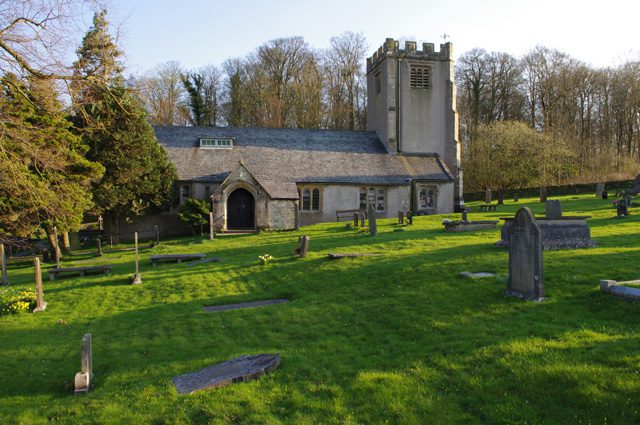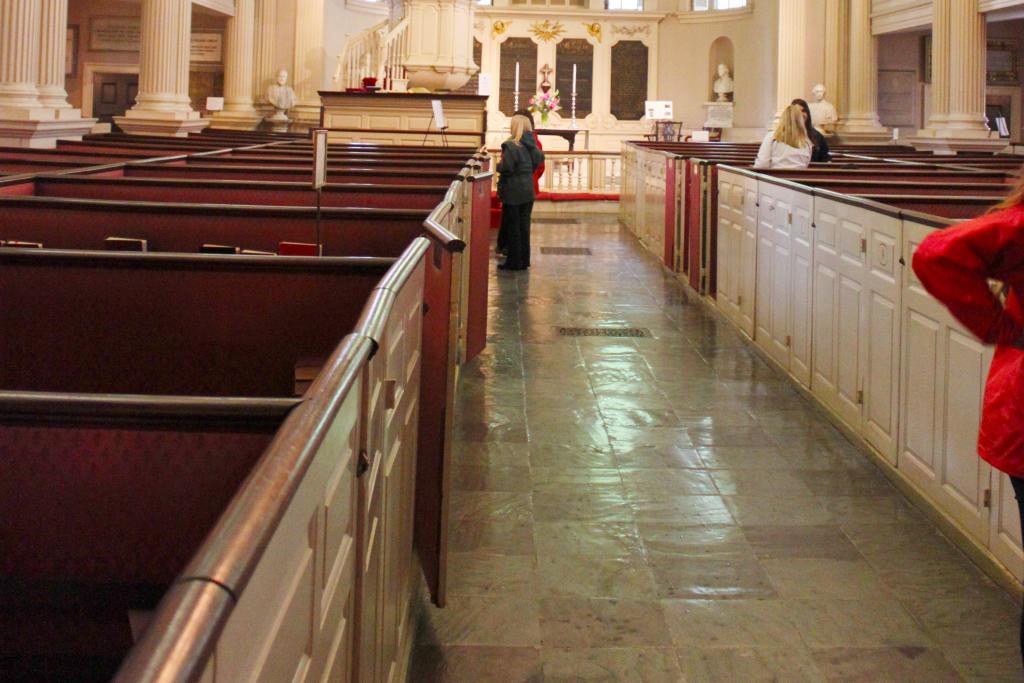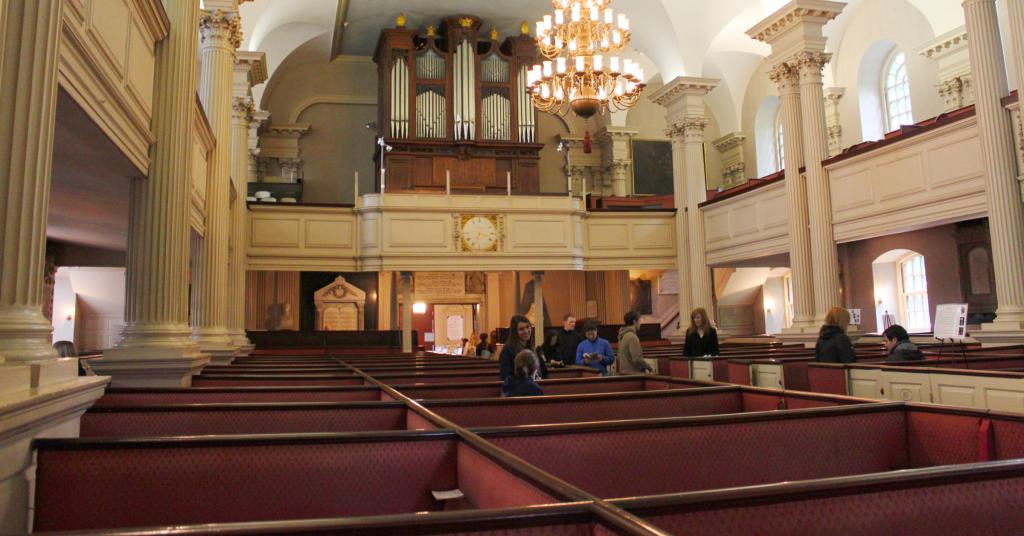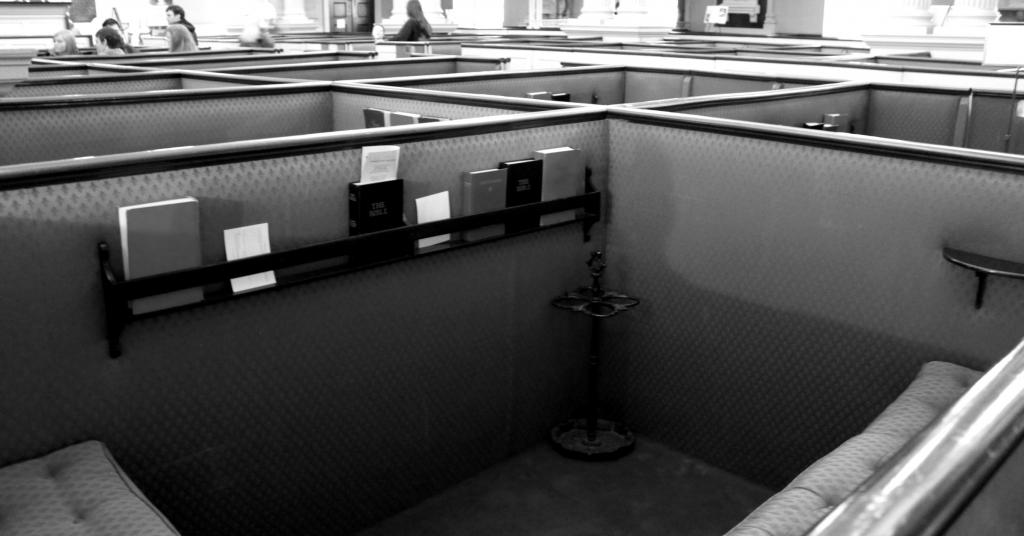What happens when we cling to religious edifices from a bygone era even though they cause more harm than good in our times? Here’s an interesting story that serves as an illustration, and as a cautionary tale for all of us.
We begin with an article from the Church Times, a U.K. newspaper that covers the Anglican Church but is independent from it. It concerns St. Cuthbert’s, the parish church of the village of Over Kellet in northwest England. The building is listed as a historic site, and thus has restrictions on what modifications can be made.

St. Cuthbert’s has box pews – more on that later. Last year the church removed the doors from the boxes. That removed a touchpoint and a possible source of transmission for the Covid-19 virus. This year, the church applied for permission to leave the doors off permanently. They said that would make the church “more accessible and welcoming” especially to those with limited mobility.
The Diocesan Chancellor denied permission, based largely on recommendations from various historical societies. The doors must now be replaced.
St. Cuthbert’s is not Westminster Abbey or one of the other large cathedrals that are more museums and tourist attractions than working churches. It’s a very old building, but it’s an active parish church – it’s part of a living community. But some people want to keep it frozen in the past.
This essay is not about what are and aren’t proper pandemic protocols (unlike what we thought at the beginning of the pandemic, it now appears there is little chance of Covid transmission via surface contact). Nor is this about the question of local control vs. central control (I generally prefer local control over local matters and central control over matters of general interest). It’s not even about whether box pews should or shouldn’t have doors.
Rather, it’s about what happens when we allow religion to be frozen in the past and become an museum exhibit rather than a living tradition.

Box pews – artifacts of a bygone era
The earliest Christian churches did not have pews, or any other seating. They first appeared in the 13th century, but they didn’t become common until the Protestant Reformation. When the sermon replaced holy communion as the center point of the service, seating became necessary. But who would pay to install seating?
In many churches, that responsibility fell to individual families. Box pews allowed them to clearly delineate their property, and they provided some protection from cold drafts. Other churches used pew rentals as a major source of fundraising, and rent could be very high, particularly for pews in desirable locations.
The practice was brought to the Americas – many Colonial era churches still have box pews. I saw a couple of them when I visited Boston a few years ago, including some in churches that are now Unitarian Universalist.
Some churches were “closed” – if you didn’t own or rent a pew, you couldn’t attend. No doubt this played a large part in the historically low church attendance during the Revolutionary War era.
The practice of pew rentals didn’t end in some locations until the 20th century. Churches realized that it wasn’t very welcoming and discouraged people from attending.
But the box pews remain in many churches, artifacts of a bygone era.

St. Cuthbert’s – a thousand year old church
According to information on the church website, there has been a church in the village of Over Kellet since the 900s. The current stone building dates to about 1215. A tower was built in the 1300s and enlarged in the 1500s when a major tear-down-and-rebuild project took place. Further additions and renovations were made in 1856, 1909, and 2006.
The pews in question were installed in 1817 – they’re a relatively late addition.
As an American, I’m in awe of buildings and other structures that have existed for many centuries. I’m annoyed by our tendency to tear down anything more than 20 years old so we can build something bigger and newer. There is value in preserving our architectural heritage.
St. Cuthbert’s has been a living church for over a thousand years. It’s been modified numerous times, sometimes extensively. But now it’s considered “a building of special architectural or historic interest” and is being placed in a glass case (metaphorically speaking) where it will be suspended in time forever, regardless of the needs of the congregation. Previous generations were free to modify the building – and they did. Future generations are not.
Bryn Celli Ddu – five thousand years old and still living
Bryn Celli Ddu is a henge and tomb-shrine on the island of Anglesey in Wales. It’s also the site of public high day celebrations by the Anglesey Druid Order. I visited it in 2014 and again in 2018 – the last visit inspired a blog post I titled The Impact of Human Activity on Sacred Sites.
The contemporary Druids are very respectful of Bryn Celli Ddu, but they see her as a living person – a person who wants people to come and experience her and celebrate with her.
Like St. Cuthbert’s, Bryn Celli Ddu has been built and rebuilt multiple times. It began as a simple gathering place. Then a ditch and bank were constructed – the ditch is still there, but the bank is gone. Standing stones were set up, then they were removed and the passage tomb installed. And then it was abandoned and forgotten.
Modern exploration began in the 1800s. In the 1900s some reconstruction occurred, including installing concrete roof pillars for safety reasons.
Over the past 30 years, modern Druids have processed into the henge by the same route. In doing so, they’ve worn a path into the ground. When future archaeologists examine the site, they’ll be able to determine how it looked in past millennia, and they’ll also be able to see how it was used in the 21st century.

The question of appropriate modifications vs. inappropriate ones is worthy of debate. I touched on this earlier this year in a post about the Roman Colosseum getting a new floor. I’m glad that concerts and other cultural events will be held in the Colosseum once again. I would be far less happy if it was being turned into apartments. But places that were built to be used need to be used, not just admired from an antiseptic distance.
As with buildings, so with culture and doctrine
Buildings are living parts of a religious tradition – they need to change and grow over time. And what’s true of physical structures is also true of other parts of the tradition.
Some Christian denominations still refuse to ordain women – or otherwise consider them the equals of men – because that’s how things were done for centuries. Some have made hating gay people the essence of their religion… or at least, that’s what they argue in court. Much of the problem with the Taliban is their desire to force everyone to conform to the cultural norms of 7th century Arabia.
Some such problems are less damaging but no less problematic. As we discussed in the last post, too many modern Pagans are more concerned with re-creating a Golden Age that never was than they are with building a robust religion here and now.

At its core, a religion is the accumulated wisdom of those who came before us. It provides guidance as to how best to relate to the Gods and spirits, to the natural world, and to each other. It’s what has been shown to work best when it comes to living a good and virtuous life. This wisdom should be respected, and it should be changed slowly and with serious deliberation.
But when it needs to change, it must change. If it becomes frozen in the past, then priests and practitioners become museum curators, obsessed with preserving what was while the tradition takes another step toward irrelevancy and eventual death.
Whether or not St. Cuthbert’s replaces the doors to their box pews is far from the most important issue of the day to the church, much less to the rest of us.
What’s important is the dangerous idea that an edifice of religion be maintained in perpetuity even though it no longer serves the religious tradition or its practitioners.
And that’s something we all need to think about very carefully.
















